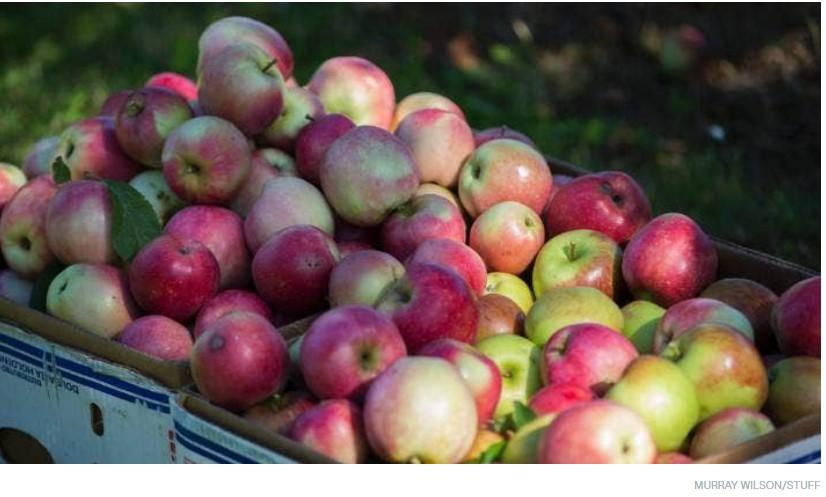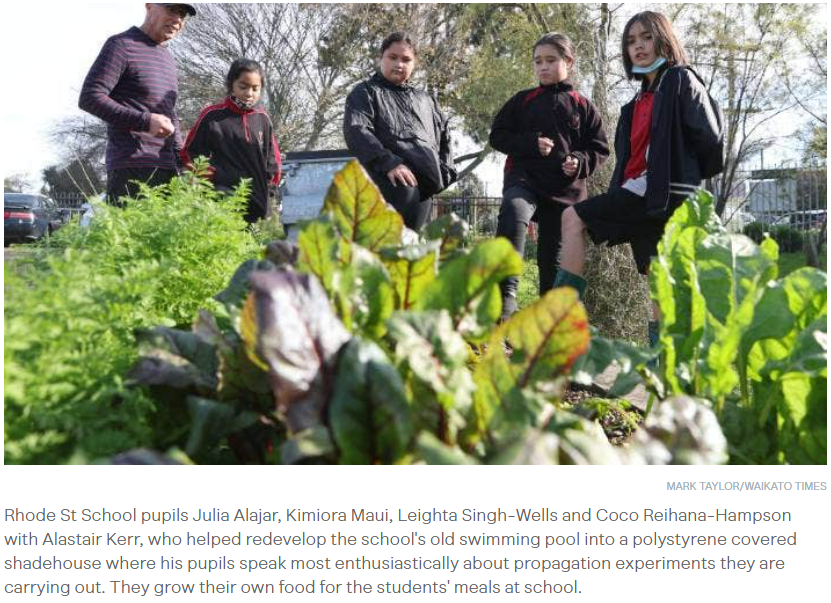
Know what’s happening
Access the private noticeboard for verified neighbours near you. Keep informed about any suspicious activity, send urgent updates to your neighbours when required and discuss emergency planning.
Get to know your neighbours
Browse the directory and start getting to know your neighbours. Don’t want to post to the whole neighbourhood? Send a private message.
Buy, sell and give away
Want to declutter your garage? Buy some used household items? Give away some garden stuff? Become a verified neighbour to browse and post items for sale. Trading is simple when everyone lives nearby.

Explore more, worry less at Ryman
With Ryman’s lock-and-leave-style living, you’re free to explore without worrying about home maintenance or security.

Thank you for using Neighbourly
You may receive an email confirmation for any offer you selected. The associated companies will contact you directly to activate your requests.
Robert Anderson from Curtain Clean - Whanganui
Whilst it can be unsightly, pilling is not a fabric defect or flaw.
You’ve no doubt had clothing, furniture or blankets that have developed ‘pills’ over time, or little lint balls, that can make the fabric look worn. This undesired texture is caused by loose or broken fabric fibres that … View moreWhilst it can be unsightly, pilling is not a fabric defect or flaw.
You’ve no doubt had clothing, furniture or blankets that have developed ‘pills’ over time, or little lint balls, that can make the fabric look worn. This undesired texture is caused by loose or broken fabric fibres that rise to the surface and knot together after being rubbed or subjected to any friction. The loose fibres that are bunched into balls also bring in strands that are still secured to the fabric itself, thus the balls stick around on the exterior. Even though people are dismayed to see pilling on their items, understanding fabric pilling helps to prevent and remove these bothersome balls.
Causes of Fabric Pilling
What does it mean when fabric is pilling? Pilling is a result of normal wear and tear that causes friction on the fabric. Simply wearing clothes, using your couch or otherwise rubbing up against the material gives the possibility of pilling. Washing and drying clothes or fabric can also speed up the pilling process as it causes multiple surfaces to rub together fairly quickly and for a long period of time.
Sometimes you can have pilling that differs in colour to the base fabric as multiple coloured fibres have migrated and twisted together. Although not desired, a little decorative perhaps?
Pilling is more noticeable on synthetic fibres. This is mainly because natural fabrics shed loose fibres easily and naturally slip away so they tend to not become matted into balls. However, synthetic fibres are extremely strong, so it will pill and then remain strongly attached to the fabric.
Keep reading: www.curtainclean.co.nz...

Mei Leng Wong Reporter from NZ Gardener & Get Growing
Dear neighbours,
Have you grown these veges and fruits, and what's on your list of money savers and budget boosters?

Mei Leng Wong Reporter from NZ Gardener & Get Growing
Dear neighbours,
To celebrate National Gardening Week (October 17-25), Yates have partnered with NZ Gardener to give away some fantastic prizes to some of the most inspirational compost builders in the country. Show us your compost setup, whether it’s tiny or huge, and the best looking compost … View moreDear neighbours,
To celebrate National Gardening Week (October 17-25), Yates have partnered with NZ Gardener to give away some fantastic prizes to some of the most inspirational compost builders in the country. Show us your compost setup, whether it’s tiny or huge, and the best looking compost wins 1 of 9 Compost Kits (RRP $319 each).
So email through your best tip for successful compost and one photo of your composting setup to loveyourgarden@yates.co.nz by August 26, 2022 to be in to win.

The Team from Resene ColorShop Whanganui
Use Resene Colorwood stain and colour to easily refresh a dated bedside drawer unit.
Find out how to create your own.

With the 75+ population projected to double in 20 years’ time, it’s more important than ever to choose a retirement village that is equipped to support you when you’re fully independent as well as if you need care.
That’s why Ryman villages plan ahead by offering independent living in … View moreWith the 75+ population projected to double in 20 years’ time, it’s more important than ever to choose a retirement village that is equipped to support you when you’re fully independent as well as if you need care.
That’s why Ryman villages plan ahead by offering independent living in apartments and townhouses, assisted living in serviced apartments, resthome care and, in most villages, hospital and specialist dementia care.
We offer a higher ratio of care in our villages so that if your needs change, you have priority access to our care centres.
Find out more

Jane Winstone Retirement Village
Knitting needles are clicking across our villages and the wider community for the Yuri Bear project🐻❤️.
We’re aiming to knit 20,000 teddy bears for children displaced as a result of turmoil in their country.
We’ve been overwhelmed by the response so far, but 20,000 bears is no … View moreKnitting needles are clicking across our villages and the wider community for the Yuri Bear project🐻❤️.
We’re aiming to knit 20,000 teddy bears for children displaced as a result of turmoil in their country.
We’ve been overwhelmed by the response so far, but 20,000 bears is no small ask!
If you can knit, know someone who can or would like to find out how you can help, please click on the link below.
Mei Leng Wong Reporter from NZ Gardener & Get Growing
Dear neighbours,
How many of you remember gardening in school? Hopefully, more students and teachers will be inspired by the great work being done at this amazing school.

Robert Anderson from Curtain Clean - Whanganui
For anyone wanting to add everlasting interest to their home, you can’t look past velvet! This is a fabric that’s as rich in textile history as it is in texture with incredible durability that may surprise you.
Velvet fabric fuses a historical sense of luxury and indulgence with a plush, … View moreFor anyone wanting to add everlasting interest to their home, you can’t look past velvet! This is a fabric that’s as rich in textile history as it is in texture with incredible durability that may surprise you.
Velvet fabric fuses a historical sense of luxury and indulgence with a plush, practical comfort that has a timeless style, sure to outlast any momentary design trends. With its silky sheen and rich colours, velvet holds a specific seductive quality that no eye for elegance can resist the allure of.
For a fabric that feels like a soft, buttery hug the unique piles have a hard-wearing quality that will ensure your velvet curtains, cushions or furniture will continue to be loud and daring or subtly sophisticated for years to come.
History of Velvet
The history of velvet is one of luxury and meticulous construction. It is believed the material was first introduced in Baghdad around 750 A.D. The original velvet material was made from silk and therefore naturally reserved for royalty and other notably wealthy classes that could afford the exorbitant cost.
Velvet eventually travelled to Europe on the Silk Road and gained popularity during the Renaissance. At the same time, new loom technology lowered the production costs and therefore widened the availability to fabric lovers of all classes. Fast-forward to the 21st century and velvet fabric can be found in almost every home, transcending and outlasting interior trends to suit any home decor for years on end.
How is Velvet Made?
Velvet is made in a very unique way. It is woven on a double piece loom that makes two pieces of fabric simultaneously with the velvet pile encased in the middle. It is then separated, creating the three-dimensional texture velvet is known for.
While the first velvets were made from silk, more recent adaptations in the production process means velvets can now be made from natural or synthetic fibres such as polyester, nylon, viscose, or rayon.
Classic plain velvet will then be sheared to ensure the pile is a consistent length and often brushed while moist to achieve a nice uniform grain across the fabric. If the fabric is destined to boast a pattern, at this point in the process it will be crushed, embossed or snipped to different lengths to ensure this pattern is part of the pile’s identity for the life of the fabric.
Velvet is then dyed to produce amazing, rich colours that are accentuated by the three-dimensional texture.
Durability of Velvet
Due to the aura of luxury surrounding velvet and the fact that it was originally made from silk, there’s a preconception that it’s delicate and requires gentle, loving care to stay pristine. We’re here to set the record straight!
Keep reading: www.curtainclean.co.nz...

Mei Leng Wong Reporter from NZ Gardener & Get Growing
Dear neighbours,
Every month, NZ Gardener runs a series of tested reader recipes using a seasonal crop. We are now on the hunt for asparagus recipes, so send your best ones to mailbox@nzgardener.co.nz before August 21, 2022.
Every published recipe wins a copy of our special edition Vegetable … View moreDear neighbours,
Every month, NZ Gardener runs a series of tested reader recipes using a seasonal crop. We are now on the hunt for asparagus recipes, so send your best ones to mailbox@nzgardener.co.nz before August 21, 2022.
Every published recipe wins a copy of our special edition Vegetable Growing Made Easy.

Making it onto the first rung of the property ladder can be an incredibly rewarding journey – and Stuff is here to help you through.
Stuff Homed has launched the First Time Buyers’ Club, an email series to help you navigate the equal-parts exciting and terrifying process of buying your first… View moreMaking it onto the first rung of the property ladder can be an incredibly rewarding journey – and Stuff is here to help you through.
Stuff Homed has launched the First Time Buyers’ Club, an email series to help you navigate the equal-parts exciting and terrifying process of buying your first ever home. When you join our six-week LearnStuff course, you’ll get an email every week giving you all the basics on what you need to know, who you need on your side, and what you need to do at each stage of the journey.
We can’t make the houses any cheaper, but we can guide you through the process, share some tips from the experts, and help you avoid some of the trips and traps.
Sign up (it's free) and get started on your house-buying journey.
Sign up now

The Team from Resene ColorShop Whanganui
It’s easy to age a brand new terracotta pot using Karen Walker Chalk Colour and Vintage Wax from Resene.
Find out how to create your own.

Orange Guy from Electoral Commission
The countdown is on! Make sure you’re enrolled and your details are up to date by 12 August to make voting in the local elections easy.
Visit vote.nz or call 0800 36 76 56 to find out more.
Find out more

Jane Winstone Retirement Village
Could your local dance group use a $5,000 cash injection?
Whether it’s pre-schoolers or seniors, Scottish dancing or salsa, kapa haka or Kathak, breakdance or ballet – if you’re encouraging people of all ages and abilities to keep moving through dance, we have three Love to Dance grants up… View moreCould your local dance group use a $5,000 cash injection?
Whether it’s pre-schoolers or seniors, Scottish dancing or salsa, kapa haka or Kathak, breakdance or ballet – if you’re encouraging people of all ages and abilities to keep moving through dance, we have three Love to Dance grants up for grabs.
Receive one of three $5,000 grants to spend on equipment, transport, costumes or anything you need to support your community’s love of dance.

It’s time to start thinking about what you can do to help out those who need it most this Christmas. 1 in 5 Kiwi children are currently living in households that don’t have enough food. Christmas Box is a food box that caters to a family of 4-6, helping supplement breakfast, lunch and dinner … View moreIt’s time to start thinking about what you can do to help out those who need it most this Christmas. 1 in 5 Kiwi children are currently living in households that don’t have enough food. Christmas Box is a food box that caters to a family of 4-6, helping supplement breakfast, lunch and dinner meals over a week.
For just $40 you’re not only providing food essentials and treats but you’re also giving hope to families in need.
To sponsor a box, go to christmasbox.co.nz.
Know more

Robert Anderson from Curtain Clean - Whanganui
Looking after your washing machine will maximise its life and performance.
Our member surveys indicate that the average life expectancy of a top loader is seven years, and 12 for a front loader. A little care and maintenance can go a long way, so here are some tips to help you get the most from … View moreLooking after your washing machine will maximise its life and performance.
Our member surveys indicate that the average life expectancy of a top loader is seven years, and 12 for a front loader. A little care and maintenance can go a long way, so here are some tips to help you get the most from your washer.
Watch out for keys and coins
Keys and coins kill washing machines. Check pockets before washing, and look for dirt and objects left in the drum, or hidden in the rubber seals after each wash.
Check your pump filter
Many washing machines have these as a last line of defence against foreign objects. Look for a small hatch low down on the outside of your machine. Check this monthly and clear anything that shouldn’t be in there — use a towel or tray to catch the water when you open it up. If your machine isn’t draining, this is the first thing to check before calling for a repair.
Limit your washer's spin speed
Keep this to 1200rpm, even if your machine goes up to 1400 or even 1600rpm. Higher speeds reduce the life of belts, drum bearings and door seals, without removing much more water.
Don’t use fabric softener with laundry detergent
Fabric softeners react to create a waxy residue called “scrud”. No one wants “scrud” – especially as it clings to unseen parts of the machine, such as under the agitator. If blobs break free, they can leave greasy marks on laundry.
Regularly clean the detergent dispenser
Check the manual to see how to remove it, and wash it thoroughly in warm soapy water.
Clean the door seal
Remove water from the door seal after each wash (if you notice mould, wipe the rubber seal with hot water and detergent). Between washes, leave the door and detergent dispenser open – that lets the interior dry.
Use the service cycle
Many machines have a specific “service” or “cleaning” cycle. It helps your machine smell fresh, prevents detergent build-up, and keeps it cleaning at its best.
If your machine doesn’t have a service cycle, run a hot wash with a full-strength powder detergent once a month.
Keep reading: www.curtainclean.co.nz...
 Loading…
Loading…
Are you sure? Deleting this message permanently removes it from the Neighbourly website.
 Loading…
Loading…

 Buyers $499,000+
Buyers $499,000+



 Marketed by Tess Hunt
Marketed by Tess Hunt

 Buyers $359,000+
Buyers $359,000+



 Marketed by Tess Hunt
Marketed by Tess Hunt

 Buyers $579,000+
Buyers $579,000+



 Marketed by Tess Hunt
Marketed by Tess Hunt

 Buyers $719,000+
Buyers $719,000+



 Marketed by Tess Hunt
Marketed by Tess Hunt

 Buyers $1,950,000+
Buyers $1,950,000+



 Marketed by Anthony Floyd
Marketed by Anthony Floyd

 Offers over $580,000 plus GST
Offers over $580,000 plus GST
 Marketed by Robert Dabb
Marketed by Robert Dabb

 Deadline Sale
Deadline Sale



 Marketed by Taylor Quine
Marketed by Taylor Quine

 Buyers $849,000+
Buyers $849,000+



 Marketed by Jo Davenport
Marketed by Jo Davenport
© Neighbourly 2024
